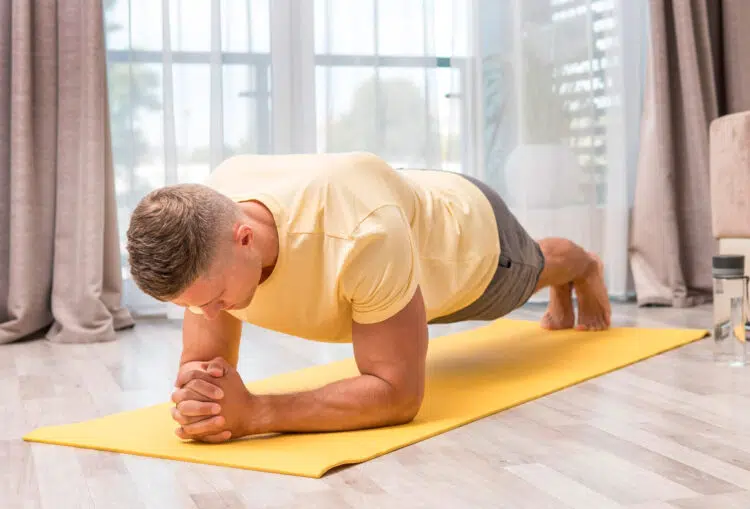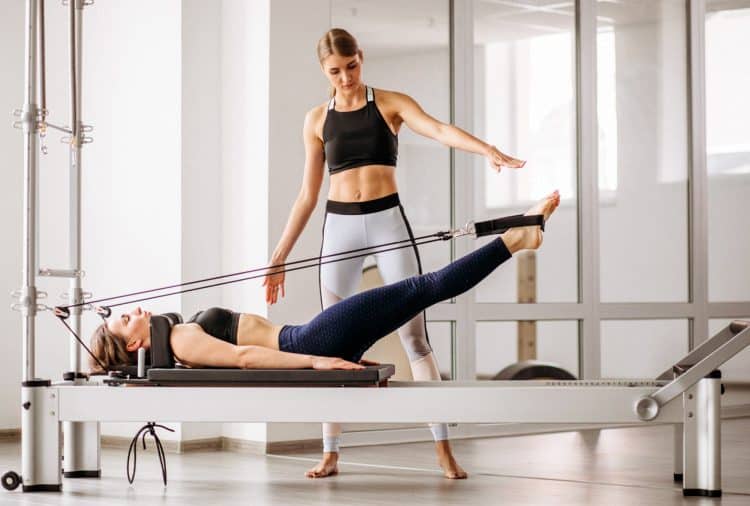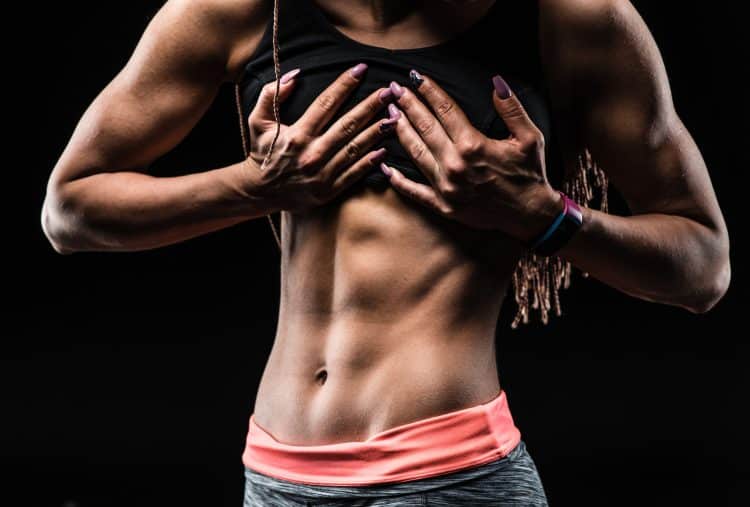
You have probably seen folks in your gym holding planks like their life depends on it. But what if I told you planks might not be as effective as people make them out to be?
As a personal trainer with almost two decades in the trenches, I can attest that planks might look tough, but they miss the mark when it comes to deep core muscle development. If you routinely experience lower back nags after heavy lifts or long runs, it is a sign that your deep core needs more love.
This is where Pilates training shines.
I leveraged my experience working with athletes of varying experience levels to design a six-minute Pilates core finisher that you can do anywhere to target overlooked muscles with precision.
In this article, I pull back the curtain on my top-secret routine and how you can weave this finisher into your workouts for maximum results. We have a lot to unpack, so sit tight and read on.
Why Planks Aren’t Enough

Level Up Your Fitness: Join our 💪 strong community in Fitness Volt Newsletter. Get daily inspiration, expert-backed workouts, nutrition tips, the latest in strength sports, and the support you need to reach your goals. Subscribe for free!
Please wait…
Don’t get me wrong; planks are an excellent exercise, but restricting yourself to a single move can limit your progress. Planks are a form of isometric exercise. They involve contracting muscles without changing their length or your joint angles, meaning that you are essentially holding a static position.
Planks hit your rectus abdominis and call it a day. While this might help you achieve a shredded six-pack over time, it won’t ensure a powerful and functional overall core, limiting your day-to-day functionality and athletic performance.
A study published in the Sports Health journal concluded that the deep core muscles play a crucial role in posture, balance, and injury prevention. (1)
The Power of Pilates for Core Strength

Pilates exercises are designed to target the elusive deep core muscles and zero in on stabilizers like the transverse abdominis (natural corset for better stability) and multifidus (prevents tweaks and aches). It also engages the pelvic floor, ensuring an improvement in posture, lower injury risks, and physical performance. (2)
In Pilates, your breath is just as important as executing each movement with proper form. Think laser-sharp engagement of your muscles, not mindless reps. This can help break through training ruts.
Sticking to a Pilates routine can help reshape your body from the inside out. Many of my clients stand taller with better posture and report a reduction in lower back pain.
I’m just scratching the surface here.
6-Minute Pilates Core Workout

Now that you know why limiting yourself to planks isn’t enough, it’s time to dig into the six-minute Pilates routine that’ll help transform your core.
Each exercise lasts 60 seconds, with a 15-second rest between, except the last one, where you bask in victory.
| Exercise | Time | Rest |
| Hundred | 60 sec | 15 sec |
| Single-Leg Stretch | 60 sec | 15 sec |
| Double-Leg Stretch | 60 sec | 15 sec |
| Spine Twist | 60 sec | 15 sec |
| Pelvic Curl | 60 sec | – |
How To Perform These 6 Pilates Exercises
Knowing which exercises to perform is just the first step. You must do these moves with a picture-perfect form to get the best bang for your training buck.
The best part about these exercises is that you do not need any additional equipment for them. You can perform them in any corner of your home as long as you have enough room to spread your arms and legs. That said, using an exercise mat can make your training experience so much more comfortable.
Hundred
This exercise has got to be one of the most underrated Pilates (and core training) moves. To be honest, you do look like a little dolphin while performing it, but you’ll be begging for mercy within 20 seconds of starting it.
Here’s how to do it:
- Lie flat on your back with your legs extended and your hands at your sides.
- Lift your head, neck, and shoulders off the mat.
- Straighten your legs to a 45-degree angle, while keeping them tight together.
- Raise your arms off the floor while keeping them parallel to the floor.
- Pump your arms up and down quickly. Inhale for five pumps and exhale for five.
- Continue this for 60 seconds while shooting for 10 breath cycles (that’s 100 pumps).
Coach Tip: Ensure that your lower back is glued to the mat and prevent arching to avoid unnecessary strain.
Target Muscles:
Hundreds target the transverse abdominis muscles. It helps build a stable midsection and improves overall functionality. It also hits the rectus abdominis, building the coveted six-pack.
Level Up Your Fitness: Join our 💪 strong community in Fitness Volt Newsletter. Get daily inspiration, expert-backed workouts, nutrition tips, the latest in strength sports, and the support you need to reach your goals. Subscribe for free!
Please wait…
Beginners can start with their legs placed on the floor until they build the necessary core strength. On the flip side, advanced lifters should hold their legs between the 90 and 45-degree mark.
Single-Leg Stretch
Here is another very unassuming exercise that will fire up core muscles you didn’t know existed.
Begin by lying on the floor on your back with your legs straight. Curl your head, neck, and shoulders up while extending your right leg straight, hovering it above the floor. Simultaneously, grab your left shin with both hands and pull it toward your chest.
Make no mistake; this isn’t the simple leg stretch you do before or after a workout. This movement involves dynamic stretching. The shin of the top leg should remain parallel to the floor, while your ankles are plantar flexed (pointed).
You must also actively push the lower leg out to achieve a deep stretch in the glutes, hamstrings, quads, hip flexors, and calves. This move also biases the transverse abdominis and rectus abdominis, taking you closer to your shredded midsection goal.
Focus on one leg for 30 seconds before switching sides.
Double-Leg Stretch
We are taking things one step further with this exercise. This exercise’s name doesn’t do it justice. It might sound like the double-leg stretch is a single-leg stretch variation (which it is) that only involves the lower body. However, this isn’t true. Your arms also come into the picture during this movement.
The double-leg stretch hits your whole core with one fluid motion.
How to Do It:
- Lie on your back on an exercise mat.
- Lift your head, neck, and shoulders, and hug both knees to your chest with your hands on your shins.
- Pull your knees toward your head for a big glute and hamstring stretch.
- Then, stretch your legs out straight while reaching your arms overhead. Push your extremities in each direction to fire up the transverse abdominis and obliques.
- Circle your arms back, pulling your knees in again.
- Repeat this for 60 seconds while sticking to textbook form.
Coach Tip: Exhale as you stretch out and inhale as you pull in. Syncing your movement with your breath will put you in a flow and help maximize target muscle fiber recruitment.
Spine Twist
It’s time to twist it out. This Pilates exercise helps carve your obliques and boost spinal mobility. I’d say that this exercise is an excellent Russian twist substitute that sculpts your sides for that coveted V-taper and bolsters the erector spinae muscles for improved support.
Sit down with your legs straight out and feet dorsiflexed. This will ignite your calf muscles and give you a solid starting point. Then, get into the starting position by stretching your arms wide at shoulder height.
Twist your torso right, pulsing twice in the fully shortened position for maximum target muscle recruitment. Return to the starting position, then twist left. Switch between sides for 60 seconds.
Make sure that your arms are in a straight line throughout the exercise. Perform the pulse when you can’t turn anymore without losing the sync between your arms. Keep your hips locked during this exercise and focus on twisting from the waist up. Keep your spine tall and avoid slouching at all costs.
Modifications For Athletes of Different Experience Levels:
- Beginners: Slightly flex your knees to ease the tension on your hamstrings.
- Advanced: Hover your feet off the ground to challenge your core stabilizer and balance.
Pelvic Curl
This exercise is known by unique names in different circles. While bodybuilders call it the glute bridge, Pilates folks call it the pelvic curl. This exercise primarily targets the glutes, hamstrings, and erector spinae muscles.
Step-by-Step Instructions:
- Lie on your back on an exercise mat with your knees bent, feet flat, and hip-width apart on the floor.
- Rest your arms by your sides, palms down.
- Contract your core and tilt your pelvis up, rolling your hips off the mat, vertebra by vertebra.
- Pause at the top, then lower slowly.
- Repeat this for 60 seconds to ignite your posterior chain muscles.
I have my clients pause at the top of their range of motion and contract the glutes for optimal muscle fiber stimulation. Glutes are the biggest muscle group, and ignoring them can hamper your performance and posture. Also, focus on your breathing to feel all the target muscles work in unison.
Advanced athletes can challenge themselves by performing this exercise while lifting one leg off the floor and holding it straight up. This will fire up the cold muscle stabilizer, helping unleash your maximum fitness potential.
How to Integrate This Routine into Your Fitness Plan
I have firsthand witnessed countless clients transform their core strength by slotting this six-minute routine into their lives. Here is how you can do it too:
Programming into Workouts
There are four main ways of integrating it into your daily life:
- Post-Strength Training: Cap off your lifting session with this six-minute Pilates routine. This will reinforce your transverse abdominis and multifidus, stabilizing your spine for better lifts next time.
- After Cardio: Do this after a running or cycling session to re-engage your core, cool down your muscles, and build strength.
- Standalone Session: Since this workout does not require any equipment, you can do it anywhere and at any time, leaving you no excuses to skip a session.
- Morning Wake-Up Routine: I sometimes like to start my day with this routine as it fires up my core and sets a strong foundation for everything from sitting at my desk to crushing an afternoon training session.
Training Frequency
With all that said and done, your training frequency is just as important to achieving your objectives. Contrary to what most people think, you don’t need to push yourself to the brink of breaking to achieve meaningful progress. In fact, doing this can be counterproductive.
Consistency beats intensity when it comes to achieving your fitness goals sustainably. I recommend hitting this finisher 3-4 times a week for optimal results.
Overshooting this limit increases your risk of overtraining and burnout, as your muscles won’t get enough time to recover from these sessions. Learn to listen to your body and adjust your training volume, intensity, and frequency, depending on how you feel.
Note: The content on Fitness Volt is for informative purposes only. Do not take it as medical advice to diagnose, prevent, or treat health problems. If you’re suffering from a health issue, are pregnant, or are under 18 years old, you should consult your physician before starting any new supplement, nutrition, or fitness routine.
Conclusion
Planks are a great exercise, but they should not be the only move in your core training arsenal if you want to build a strong and functional midsection. Performing this six-minute Pilates core finisher up to four times weekly can help you develop greater strength, stability, and overall core function.
Start small, perform this routine once or twice weekly, and increase the training frequency as you gain more experience. Stick with this workout for at least 12 weeks, and you’ll be surprised by the power of training your core for just six minutes a day. Best of luck!
References:
Fitness Volt is committed to providing our readers with science-based information. We use only credible and peer-reviewed sources to support the information we share in our articles.
- Huxel Bliven KC, Anderson BE. Core stability training for injury prevention. Sports Health. 2013 Nov;5(6):514-22. doi: 10.1177/1941738113481200. PMID: 24427426; PMCID: PMC3806175.
- Franks J, Thwaites C, Morris ME. Pilates to Improve Core Muscle Activation in Chronic Low Back Pain: A Systematic Review. Healthcare (Basel). 2023 May 12;11(10):1404. doi: 10.3390/healthcare11101404. PMID: 37239690; PMCID: PMC10218154.







